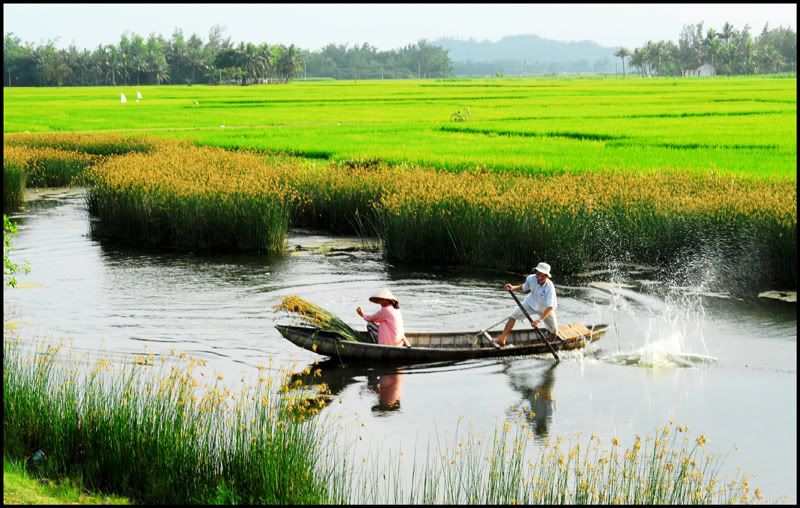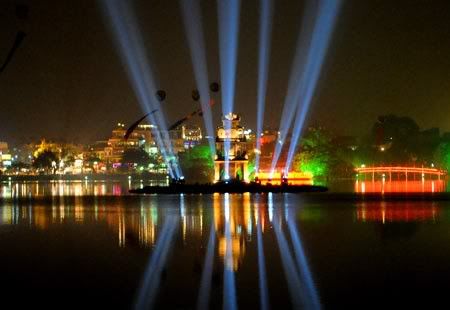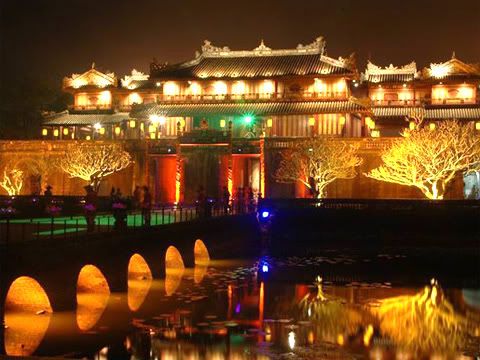Vietnam is located on the Eastern part of the Indochina peninsula, bordering China to the North, Laos and Cambodia to the West with a long land border of 4,550 km and facing the Eastern Sea (South China Sea) and the Pacific to the East and the South. Territorial map of mainland Vietnam resembles an S shape, stretching from 23°23' to 8°27' North latitude. Territorial area is estimated to be 331.689 square kilometers and its total length is 1,650 km from the northernmost point to the southernmost point. Its width, stretching from the East coast to the Western border, is about 500 km at the widest part and about 50 km at the narrowest part.

Vietnam is capped by two delta regions at either end of the country - the Red River in the North and Mekong (Cuu Long) in the South, connected by a fertile strip of Central Highlands and the extensive Truong Son Range. Its capital, Hanoi, is situated on the Red River delta. The second largest administrative city, Ho Chi Minh City, is located on the banks of Saigon River in the south.
The total population of Vietnam is over 83 million (as of 2005), of which Vietnamese (Kinh) ethnicity makes up more than 85 per cent, along with 53 ethnic minority groups. Buddhism and Catholicism are Vietnam’s dominant religions, along with other religions, such as Hoa Hao, Cao Dai, Protestantism and Muslim.
Climate and Resources
The climate is characterized by strong monsoons, a considerable number of sunny days, high level of rainfall, and high humidity. Although the country lies in the tropics and subtropics, its varying altitudes and latitudes create a diversity of climates. Winter can be quite cold in the north, while the south has equatorial climate all year-round. Vietnam is rich with a variety of mineral resources. Located beneath the subsoil are precious stones, coal, and valuable minerals such as tin, zinc, silver, gold, and antimony. Large deposits of oil and gas are found on both the mainland and offshore islands.
Economy
The important Doi moi (reform) of 1986 provided for major success and significant improvements in our economy. Economic growth and quality of life of the Vietnamese people has been noticeably enhanced. In July 1995 Vietnam was officially admitted to the Association of the South-East Asian Nations (ASEAN). The country is also a member of many international organizations - the UN, ARF, ASEM, APEC and the Non-Aligned Movement. Vietnam had gained full membership of World Trade Organization (WTO) on Jan. 11, 2007, and became a non-permanent member of the United Nations Security Council on Oct. 16, 2007. The new role of Vietnam has brought about an important opportunity for economic development and integration into the region and the world.
Performing Art
The Vietnamese performing arts include various types, such as Cheo (popular theatre), Tuong (classical theatre), Cai Luong (reformed theatre), Water Puppet, court music and dancing, Quan Ho (Folk-song or Love duet of Bac Ninh), Chau Van (Worshipping Ceremonial Songs), Ca Tru (literally "singing for reward"), "Then" singing of the Thai, "Ly" singing of the Southern region people, etc. Among them, the most commonly performed are Cheo, Cai Luong, Water Puppet, "ly" singing and Nha Nhac (refined music), one kind of Court Music.

Fine-art handicraft
Traditional Vietnamese handicraft has a long history and a diverse range of products, which have become well-known at home and abroad. Today, some handicraft industries are still preserved and developed, offering jobs and incomes to many laborers and contributing to exports, like ceramics, silk weaving, lacquer making, rattan & bamboo weaving, conical hat making, bronze casting and woodworking etc.
Amongst traditional crafts, the most salient are Ceramics, Silk, Rattan and bamboo weaving. Vietnam is especially renowned for its finely crafted lacquer objects. Both beautiful and durable, they include wall paintings, vases, jewelry boxes, trays, chessboards, and folding screens. Along with our fine ceramics and delicately embroidered fabrics, these products have captured the imagination of our visitors from abroad.

Tourism
Travel opportunities within Vietnam are plentiful.
Within Hanoi itself, cultural and historical remnants reveal a rich past replete with heroic legacies. World famous Halong Bay in Quang Ninh province is a short 2 hours from the city; its jade-like waters hold 1,969 islands. Halong Bay and Phong Nha-Ke Bang national park have been recognized by UNESCO as a World Natural Heritage site. Hue Imperial City, Hoi An Ancient Town and My Son Sanctuary in Quang Nam province have each been declared by UNESCO as World Cultural Heritage sites. Nha nhac (the Royal Refined Music) of Hue and the Central Highland gong culture were recognized by UNESCO as a “Masterpiece of the Oral and Intangible Heritage of Humanity”.
